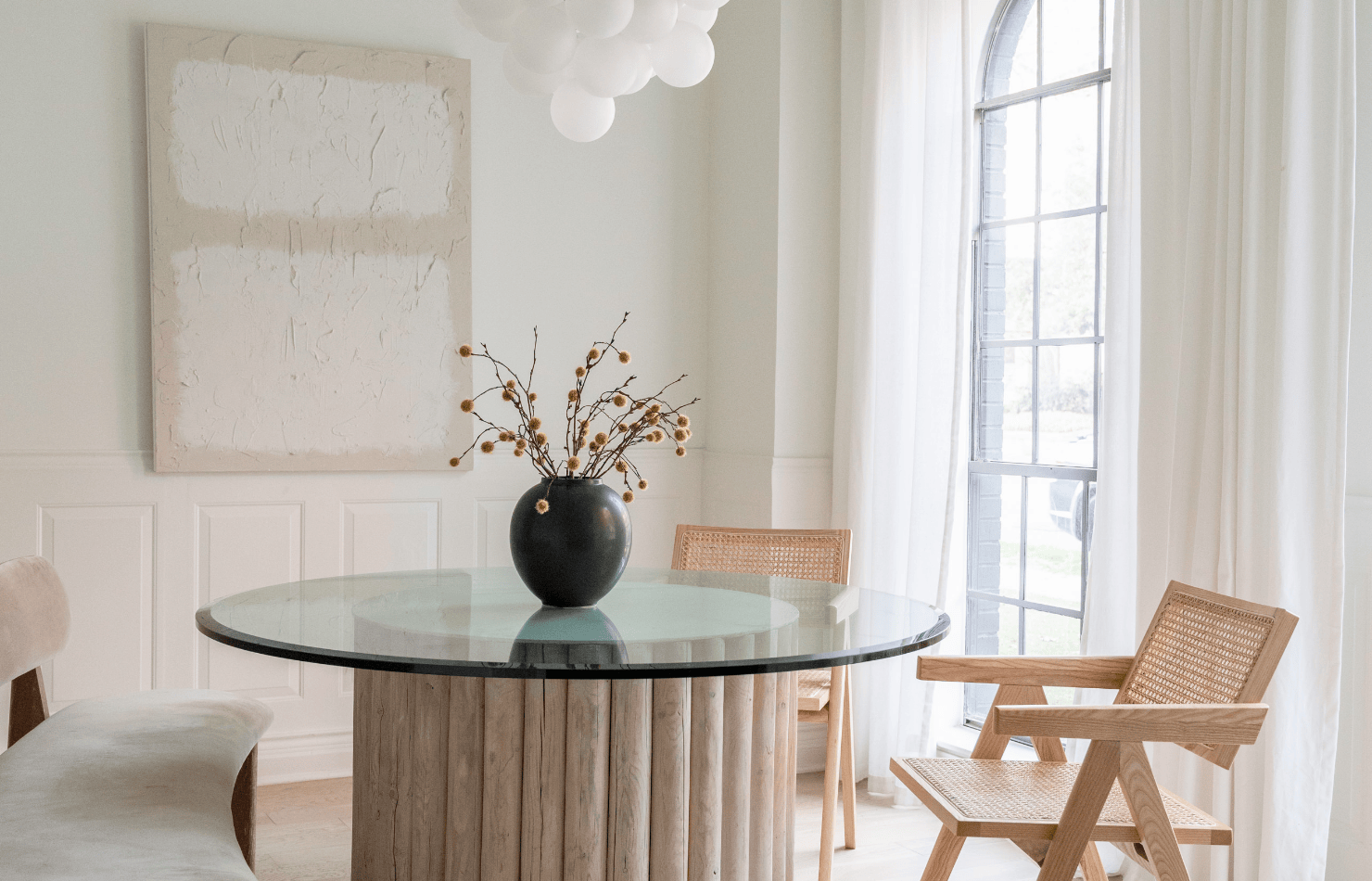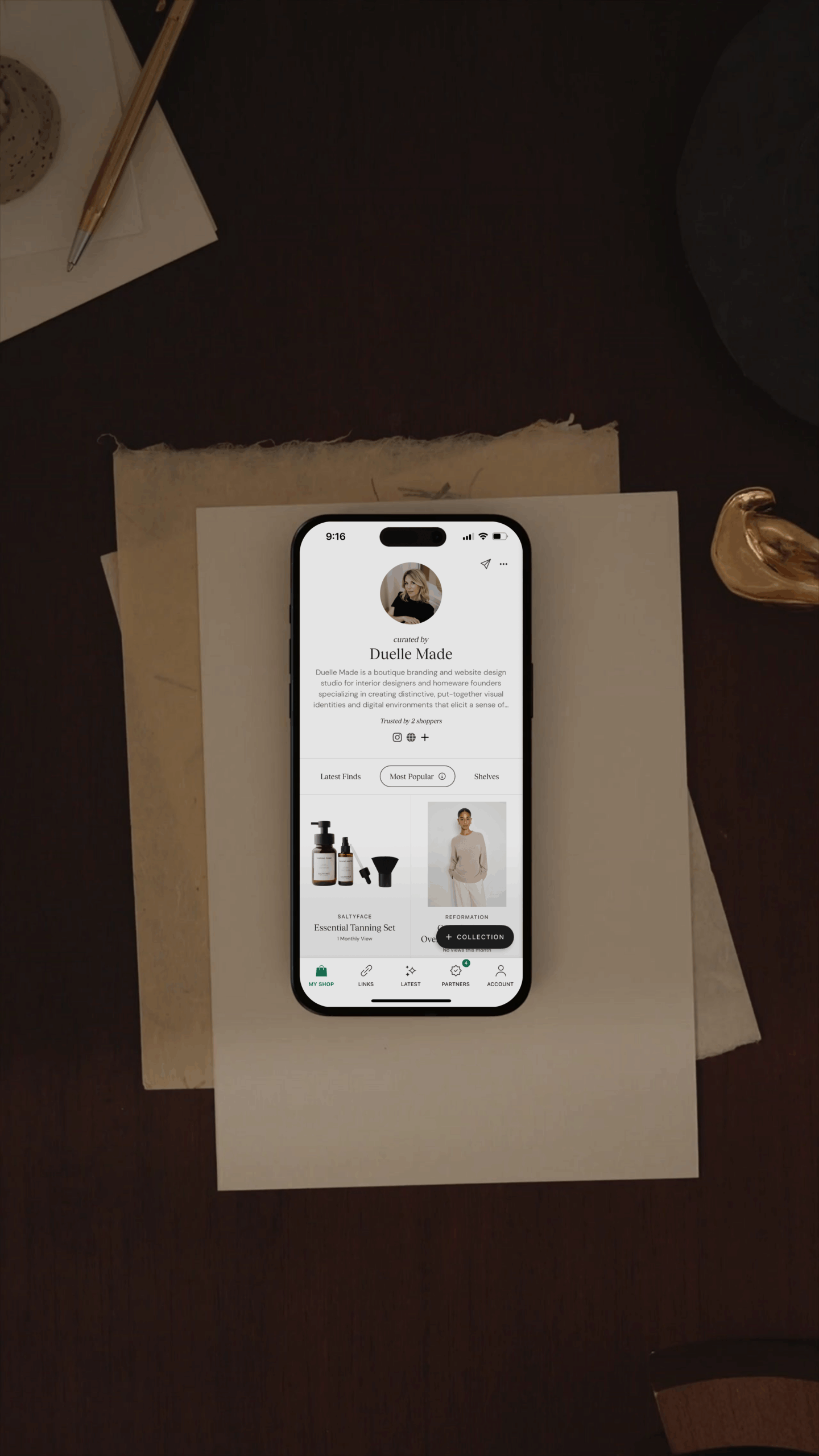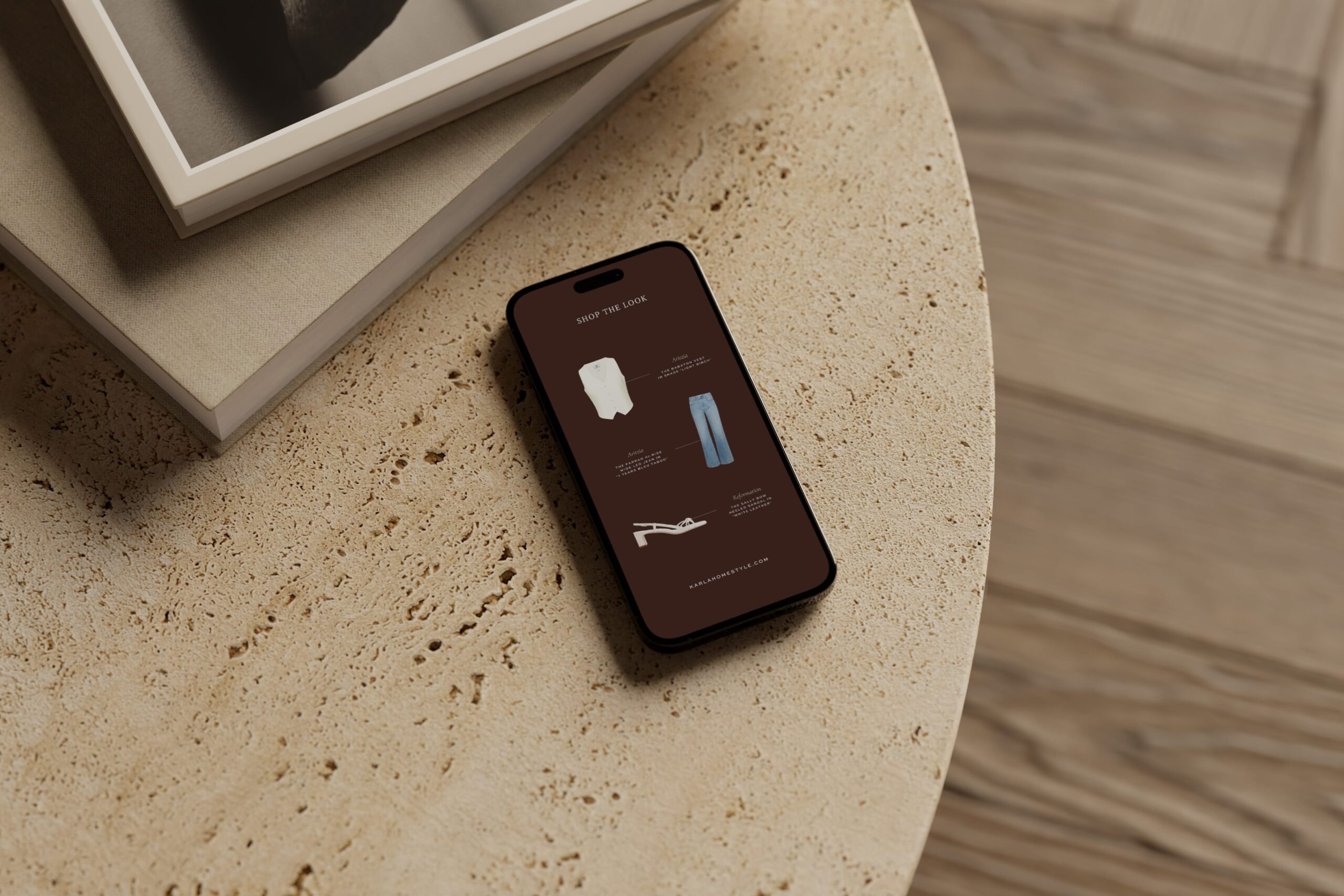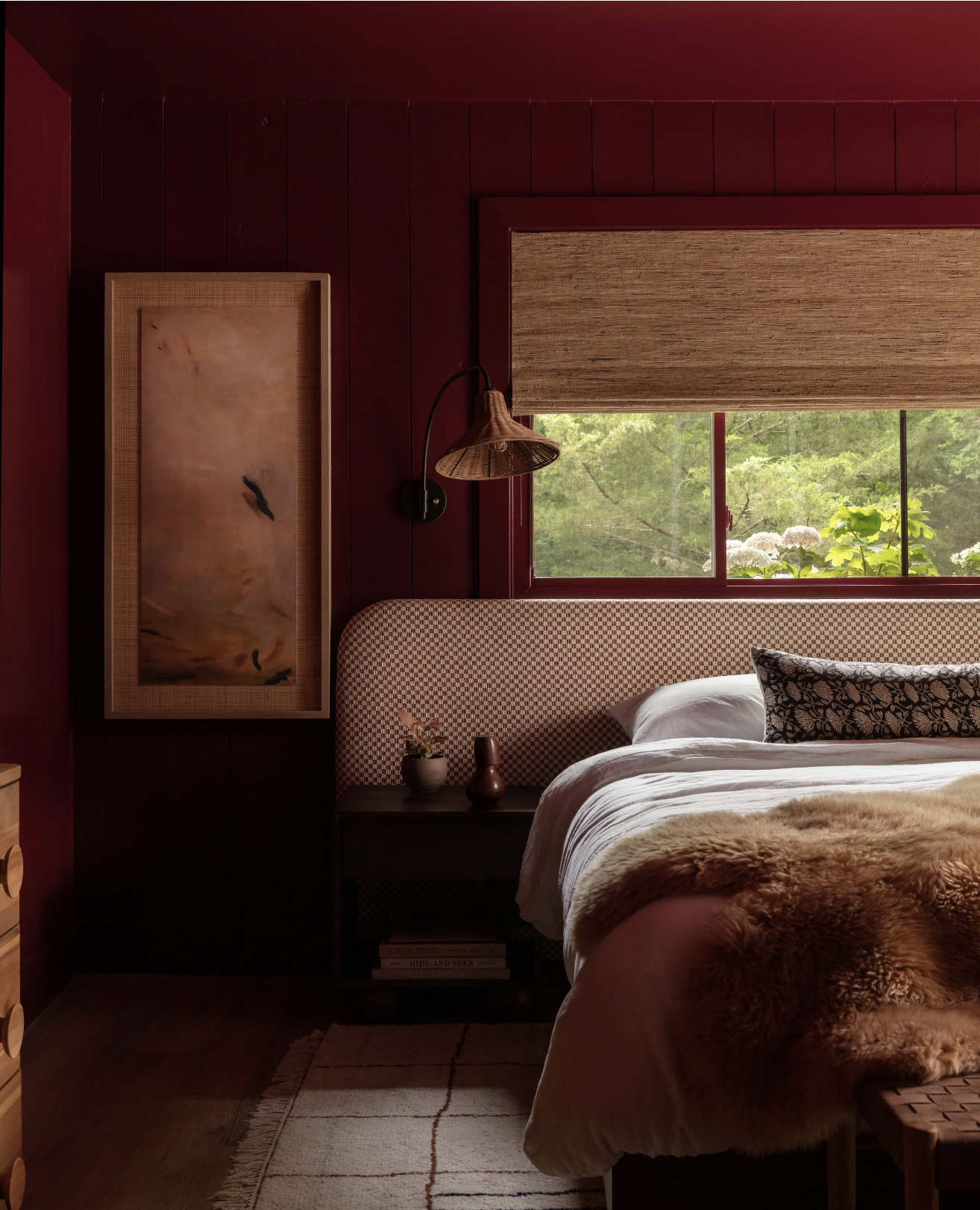The most successful interior designers understand an essential truth: while your portfolio showcases your aesthetic talent, it’s the experience you create that turns clients into passionate advocates for your brand.
Think about your own memorable service experiences. What sticks with you isn’t just the end result – it’s how it made you feel. Were you understood? Inspired? Valued? At ease?
For luxury interior design services, this mindful journey is as important as the final reveal. In this post, we’ll explore how to build a client experience that mirrors the sophistication of your designs – from the first point of contact through the final walkthrough and beyond.
Pillars of the Client Experience
A special thanks to Luz of Willow & Jax for contributing her expertise & proven client experience strategies to this post.
01—The First Impression
Your Digital Presence
Your website and social media pages set the stage for your business. They’re essentially a portfolio piece in and of themselves, displaying thoughtfully chosen colours, typography, layouts, and messaging that expresses the essence of who you are and what you do.
To turn these digital corners into a strategically curated showroom of sorts, consider implementing features like:
- Storied portfolio galleries – In a few paragraphs, paint a picture of the work that went into each transformation (optional: before & afters).
- Behind-the-scenes moments – Offer a closer look into your design process, style, where you pull inspiration, client interactions, and everyday living.
- A journal – Share your design inspiration and expertise through blog posts.
- A streamlined inquiry process – Are your DMs overwhelmed with followers interested in your services? A dedicated inquiry page moves conversations to a more structured format – whether you feature it on an Instagram Links page or easily copy & paste the URL to send to them.
- For the inquiry form itself, focus on collecting only the essential information, such as basic contact & project details. Your potential clients will thank you for not making them jump through a number of hoops – such as answering those budget bucket questions (construction vs. furnishing budgets). While it may seem like a no-brainer to you, it could be confusing or overwhelming to those you serve. So what’s the alternative? Something you might try is listing a “starting at” budget on your Inquire page to set clear expectations.
- Email newsletter signup – Offer a free valuable resource in exchange for an email address. Take inspiration from Meghan Jay Design who specializes in colourful interiors. Her free resource is a PDF of top paint colours. It’s simple yet on-brand and helpful! If you want to go the extra mile, you can use an email platform like Flodesk to trigger a welcome email sequence, guiding subscribers from being on the fence to being ready to book.
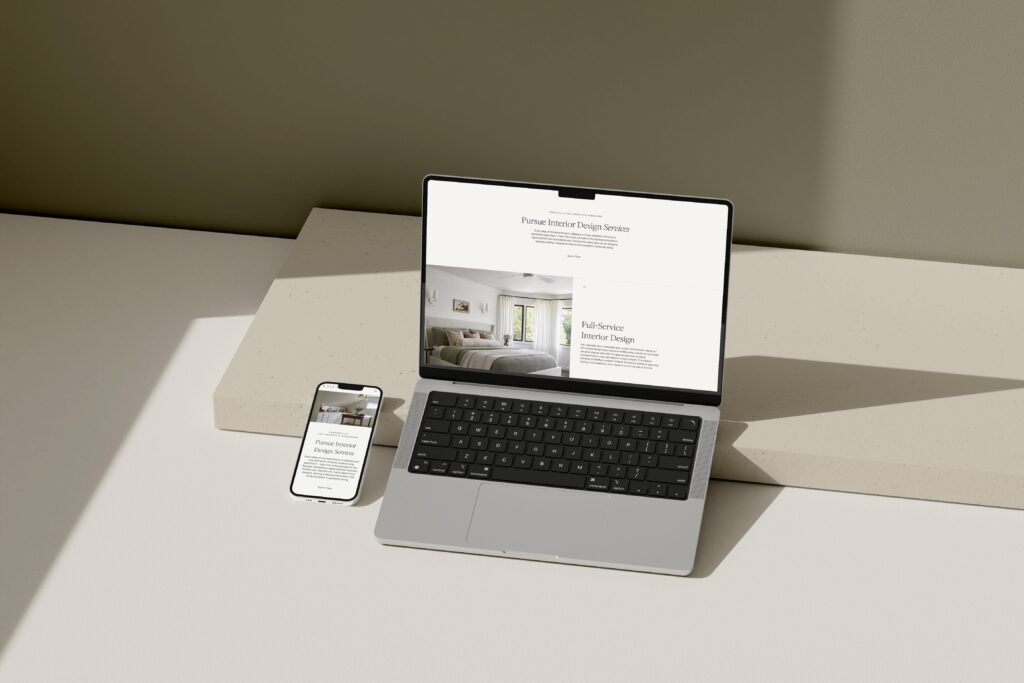
Your Ideal Introduction
You’ve just received an inquiry – a potential client has taken the first step to reach out! Their interest signals the beginning of what could become a meaningful creative collaboration.
Here’s what makes all the difference in designing a welcoming experience where connection and understanding unfold:
SCHEDULING & HOSTING A DISCOVERY SESSION.
Take time to iron out the details. Should you meet virtually or in person? Will you offer a complimentary meeting or charge a fee that could apply to the final project? There’s no universal answer. What matters is choosing an approach that feels authentic to you and your business.
Already bracing yourself for the back-and-forth email chain to coordinate the first meeting? Streamline your scheduling with a tool like Dubsado, Honeybook, or Calendly. People can view your availability and choose their perfect time slot in moments.
Does your schedule vary too much for an open booking calendar? Luz at Willow & Jax is such a savant on this topic, and when she drops her wisdom, you better believe we’re all ears! Hear what she has to say:
“Consider dedicating one or two specific days each week to new leads. This creates a ‘batch day’ where you can focus on sales and administrative tasks while maintaining control over your calendar.”
Once the logistics are sorted, focus on what you can control: showing up prepared and creating space for real conversation. Have a natural flow in mind, but stay flexible enough to let the discussion happen organically.
FOLLOWING UP.
Compare it to tending a garden – regular, gentle attention helps turn promising seeds into flourishing projects. If you felt genuine potential during your initial conversation, maintain that momentum. The next steps may be in their hands, but try checking in three days after your call, again at the one-week mark, and a final touch-base at three weeks if necessary. As a business owner, you have to watch where you spend your time. A CRM like Dubsado can automate many pieces of the process, like this one.
02—The Onboarding
Effortless Transition from Lead to Client
The shift from lead to client should feel like stepping into a warm, welcoming space – professional yet personal, structured yet inviting. A well-thought-out onboarding process does more than handle the formalities; it builds confidence, reduces uncertainty and confusion, and leads to successful outcomes.
Documents to Make It Official
- Professional proposal & contract presentation – Deliver these documents digitally for easy signing and documentation. When you allow people to complete it with a simple tap or click, you create a frictionless path from interest to commitment.
- Another savvy tip from Luz: Include a 30-day expiration date on the proposals, especially when you’re discussing specific project timelines. It’s a professional way to manage your calendar without keeping spots reserved indefinitely.
- Welcome guide – Wondering if anyone’s reading these? You’re not alone! Luz says she gets this question often. But even if clients don’t dive in immediately, she shares two purposes to using them for your interior design firm: 1) they’re a valuable reference tool throughout the project, providing a paper trail to prevent misunderstandings, and 2) clients are most attentive right after they’ve made their investment. That’s when they’re wondering, “What’s next?” A welcome guide answers their questions before they ask, organizing all the need-to-know details about working with you in one clear, accessible place.
- Design questionnaire – What information do you need from your client to deliver the best possible service and results? Gather the questions you’ll ask them into a digital design questionnaire. It’ll give them the time and space to reflect, so that you can receive more thoughtful responses. Luz shares a list of questions to better understand the nitty-gritty details of the project’s functional needs and aesthetics.
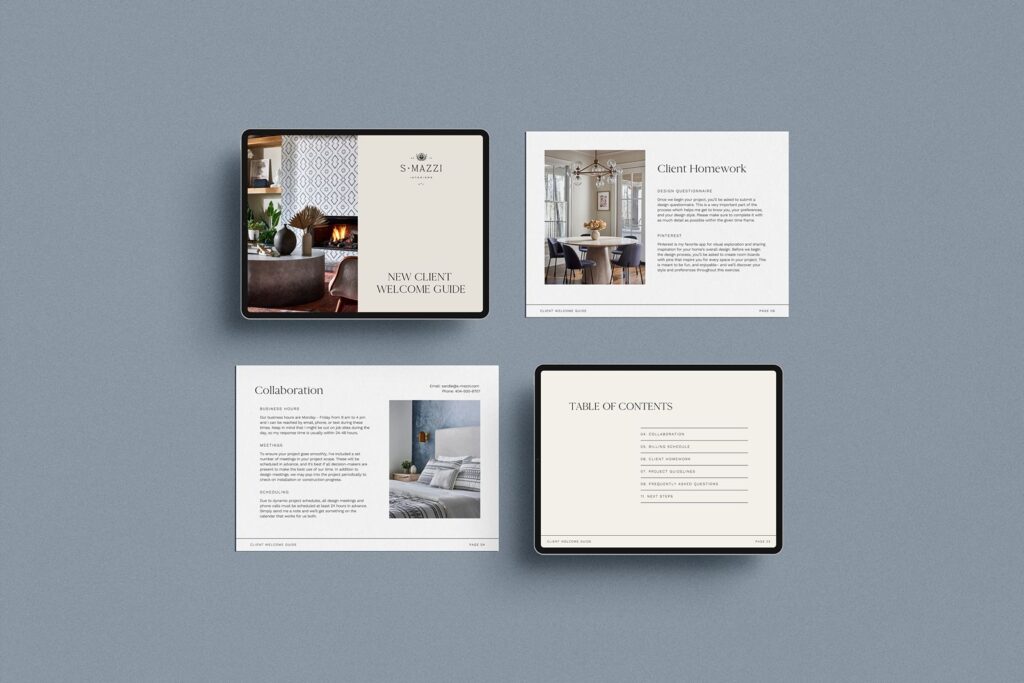
03—The Delivery of Services
While your style and portfolio might win people over, your execution gets you referrals. In conversations, clients might share stories about how smoothly the project ran, how any challenges were handled, and how you made them feel throughout the process. So here’s what you might prioritize:
Design Process
- Revisions and feedback collection
- How many revisions are included in the scope? Make sure that’s clear and documented in your contract, too.
- Create a structured feedback collection system using a tool like Dubsado. You can build a form with questions to pair with your initial concepts.
- Set specific deadlines for feedback submission and clarify that delayed feedback may impact the project timeline.
- Virtual vs. in-person meeting balance
- In-person meetings are valuable for initial consultations, concept presentations, and final deliverable reviews. It gives clients the chance to touch and feel physical samples, and it’s also your time to observe their body language and immediate reactions. Schedule virtual check-ins for quick progress updates, revision reviews, and routine discussions.
Installation & Reveal
- Pre-installation preparation and client communication
- Create a working doc that can be updated with arrival times for different vendors and furnishings, and a preparation checklist for the client so they know any to-dos they might be responsible for (e.g., areas to be cleared, pet arrangements, etc.).
- Reveal experience
- While not necessary, preparing something tangible to leave behind when welcoming clients home – even if it’s small – adds another personal layer to the work you’ve done. Some ideas:
- Bottle of wine or champagne that complements the client’s taste, tied with a bow (inspired by Molly Kidd)
- Handwritten thank you card on branded stationery expressing appreciation
- Custom client gift that relates to the project (e.g., cashmere blanket, artwork, or locally crafted item – our dear friend & client Kayla Daniels uses her artistic abilities to paint a piece to gift to her clients!)
- Along with this kind gesture, providing an organized folder with care instructions, vendor contacts, and maintenance schedules helps preserve their investment while feeling supported beyond reveal day.
- Professional photography planning
- Depending on the client’s interest, schedule the photoshoot after installation is complete and spaces are styled. Be sure you get their permission to share these photos in your portfolio and on social media and consider before/after shots to show the evolution. Yes, it’s a ton of work. But it’s all in an effort to keep your project portfolio relevant!
04—The Offboarding
Many of the interior design clients we’ve worked with are wonderful relationship builders. The offboarding process is how you maintain those connections you’ve established.
Think of it as writing the next chapter. Happy clients who feel supported even after project completion are more likely to recommend you to friends who notice their exquisitely designed spaces.
Measuring Success
Do a project debrief to gauge what worked and where there might be room for improvement. Here’s the flow we like to follow:
- Create a client feedback survey to send 1-2 weeks after you’ve completed the project.
- Get permission from the client to use their testimonial and feature the project on your social media page(s) and website.
- Set aside some time to do an internal review. Closely analyze their feedback and answer some questions yourself – in what areas did you excel? What did you love? What did you learn? Take all of this honest insight to identify areas for improvement – whether that’s in your systems & processes, design approach, or business strategy. It’s less about achieving perfection and more about growing and evolving, making each experience better than the last.
Post-Project Support
- Check on your clients – whether that’s a month or two later to see how they’re enjoying their space, on a holiday, or a special occasion in their life.
- Can you continue supporting your clients if you did anything but a whole-home project? Some examples include seasonal refreshes, single-room design and styling, and design consult offers.
- If you have an email list, invite the client to stay in touch to receive ongoing inspiration, studio updates, and design tips. Diversifying your marketing channels is a smart move, and email marketing is a great place to branch out beyond social!
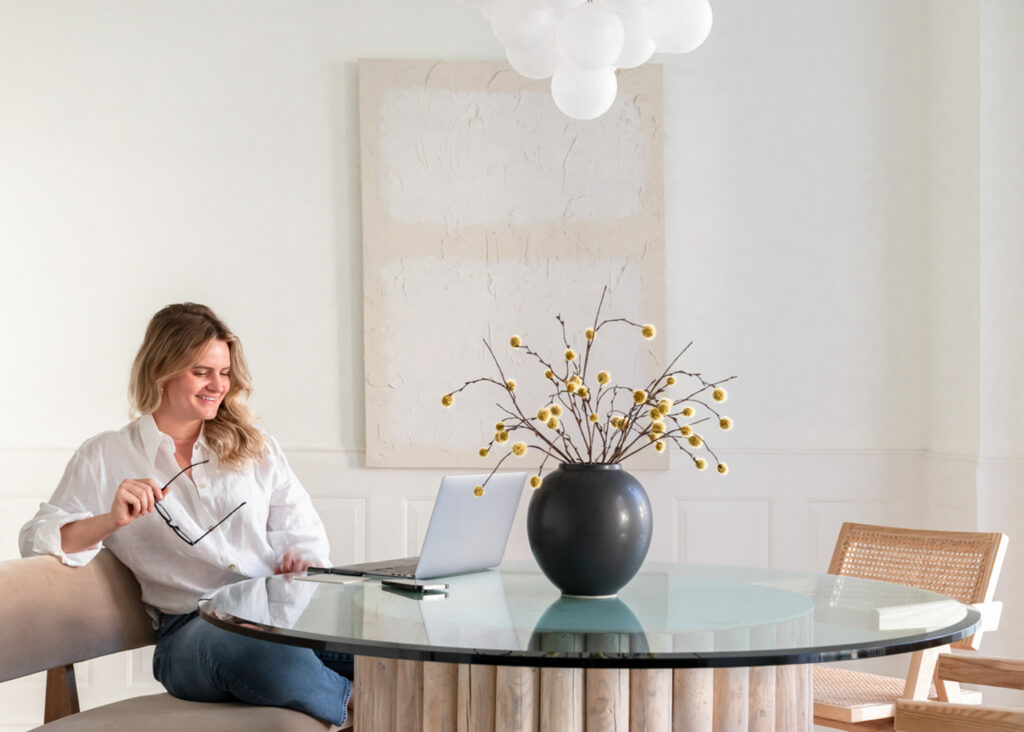
Tools & Tips to Build & Automate the Experience
Favourite Tools
- For business management – Dubsado, Honeybook
- For hosting discovery calls & virtual presentations – Zoom, Butter
- For editing on-brand templates (e.g., welcome guide, process checklists) – Canva Pro
- Your brand designer can help ensure these marketing materials reflect your business and strengthen your professional presence. If you’re interested in ongoing design support, ask if they offer something like a Design Maintenance package.
Favourite Tips
1. Balance personalization with efficiency.
Sometimes, the idea of automating your client experience can feel like you’ll lose out on your ability to be personal. But it’s possible to find a happy medium.
Build a library of pre-written but customizable email templates for common situations, maintaining your brand voice. Then, load them into a CRM like Dubsado, which allows you to set up workflows that trigger personalized check-ins at key project phases.
You’ll find that doing so keeps you more organized, efficient, and on-track when managing multiple high-end clients simultaneously.
If you need a hand with this, we highly recommend getting in touch with Luz at Willow & Jax or Hannah at Hannah Bowyer & Co.
2. Set and manage expectations & boundaries while maintaining luxury service.
Establish your working hours and preferred communication channels upfront. Be transparent about your schedule, including any anticipated time off during the project, so that clients can plan accordingly. Also, define what constitutes scope changes and outline your process for handling additional requests.
3. Handle difficult client situations gracefully.
Stay solution-focused by first listening fully to understand the client’s perspective, then responding thoughtfully rather than reactively. Keep a document of prepared, professional responses to common scenarios – like timeline adjustments, revision requests, or scope discussions – so you can reply promptly while maintaining composure. Every client interaction holds the potential to make increasingly sophisticated refinements.
There’s so much more we could cover on this topic. But it all comes down to this: thoughtful client care can become your most impactful tool to grow your design firm.
Clients aren’t only investing in beautiful spaces; they’re investing in the confidence that comes from working with someone who truly gets their vision, the excitement of seeing their goals materialize, and the peace of mind that every detail is being handled with impeccable precision and care.
Take it one step at a time, one refinement at a time – until each touchpoint of your client experience feels as flawlessly curated as your designs.
